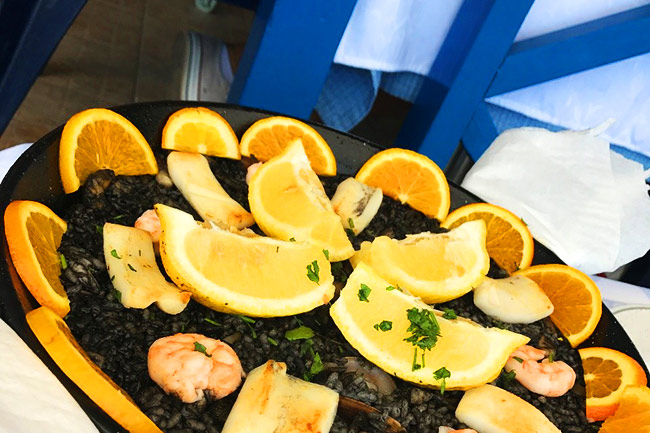This is a guest post by Xianshu.
Off the shores of Morocco, the Canary Islands are an archipelago that is part of Spain. There are seven main islands: Tenerife, Lanzarote, Fuerteventura, Gran Canaria, La Palma, El Hierro and La Gomera.
I got my first sense of their charm through an article by a famous Chinese writer called San Mao, also known as Echo. It might not be common knowledge that these islands are deeply connected with China.
In fact, lots of Chinese tourists fly half the globe to visit these remote and exotic lands only to chase after Echo’s writings and life. She was married to Jose María Quero. Jose died while diving near La Graciosa, a smaller island north of Lanzarote. His grave has become a special place that pays homage to their epic life together filled with love and adventure.
Echo told in her stories about the many fairy tiles that surround the islands. Back in prehistoric times, they were described in ancient Greek poems and in Homeric Hymns as a place where sirens sang to allure sailors passing by. In those myths, there was a golden apple guarded by six goddesses. It was hidden in one of the caves of those islands. Echo believed that Lanzarote might be the answer to that myth.
I arrived in Lanzarote by an overnight cruise from Tenerife. And with the sunset, the veil of foggy Tenerife, infinite Atlantic and a trail of white waves, the sail seemed a meditating journey to me. It reminded me of a Chinese movie, The End of the World. “Why does the Sun go on shining? Why does the sea rush to shore? Don’t they know it’s the end of the world?”
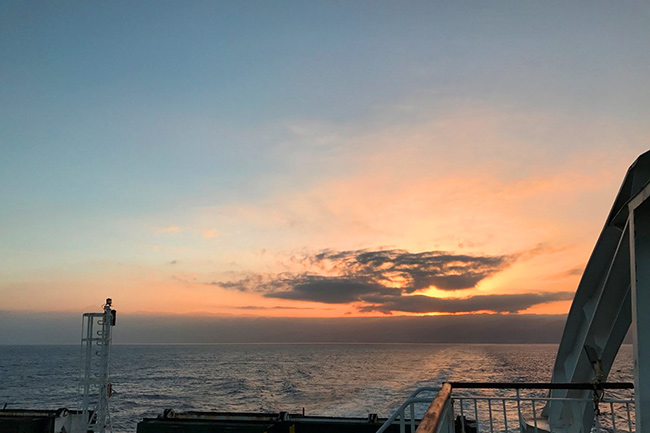
It was six thirty in the morning when I set foot on this island, which was still sleeping. The early dim light highlighted the serenity of the island, as well as the white architecture.
Also, Lanzarote islanders must be obsessed with white. Houses are painted in white. Guiding rocks along the road are white. Yards are white. Signs are white.
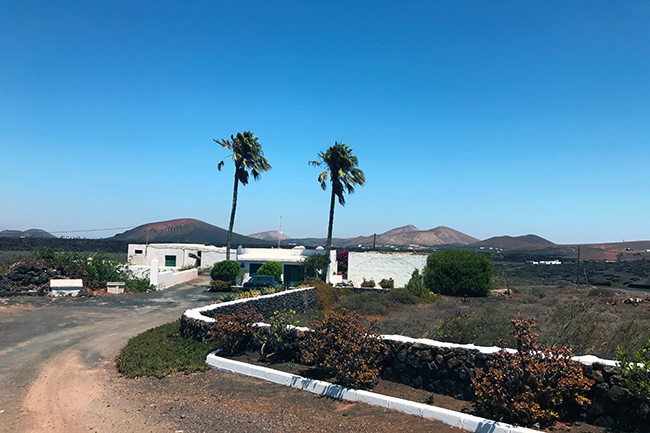
Another obsession I believe Lanzarote people might pass down generation to generation is to get everything in order. There is absolutely no chaos in that piece of land.
Their wineries, which display a moonscape scenery like very few places in the world, are organised by arch-shaped rock formations. Cactus gardens are organised in rounded rows, mazelike. The yards of the houses are organised with clean cultivation and unique design.
The sense of order that Lanzarote presents to the unsuspecting visitor requires work, hard work. This is also how Echo began her piece, “People here work a lot”.
Inhabitants of Lanzarote have suffered tremendously during the past four centuries. Aboriginals were massacred to the brink of extinction until a small number of Spanish people from Andalucía began to settle down in the eighteenth century. Historical misfortunes aside, the natural conditions do not make their work any easier either.
There are only black volcanic rocks and strong wind. People had to cultivate their land, inch by inch. But now, Lanzarote has the third largest population in the archipelago, and boasts its own respected brand of delicious grapes, melon, aloe and cactus.
With their efforts, they managed to build the one and only winery with a moon-like landscape. They cultivate extra sweet grapes and craft a range of exquisite wines. I stumbled upon “La Querencia” (“The Love” in Spanish), a small winery.
I told the owner about the story of Echo, and her comments on the industrial spirit of the local people. She said “Yes, we work a lot with the soil of our land, instead of offices and buildings. We take care of it just like our own children. Every bottle of wine.”
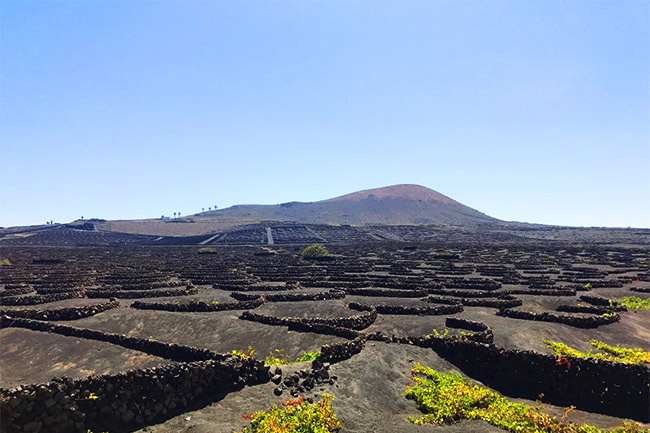
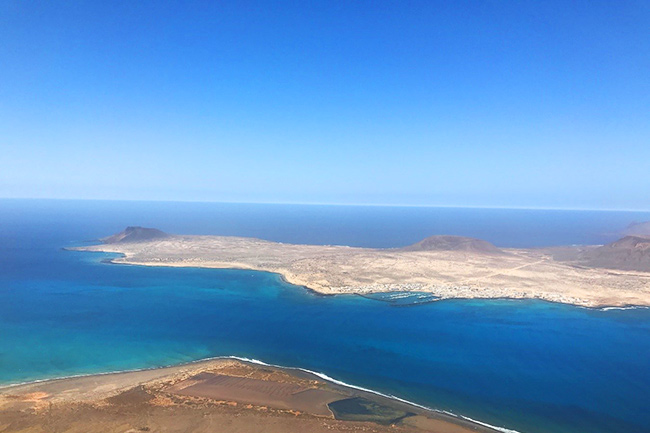
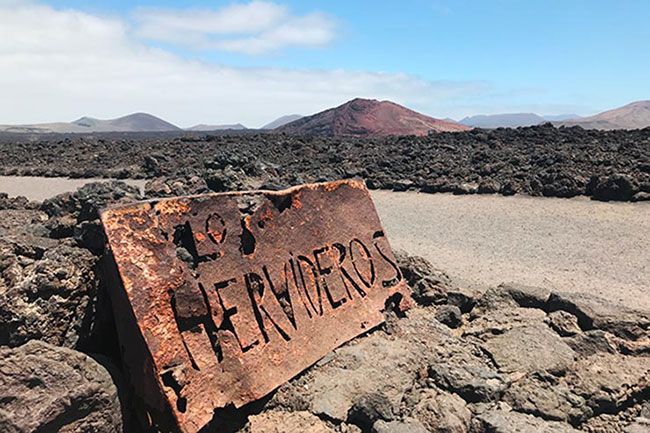
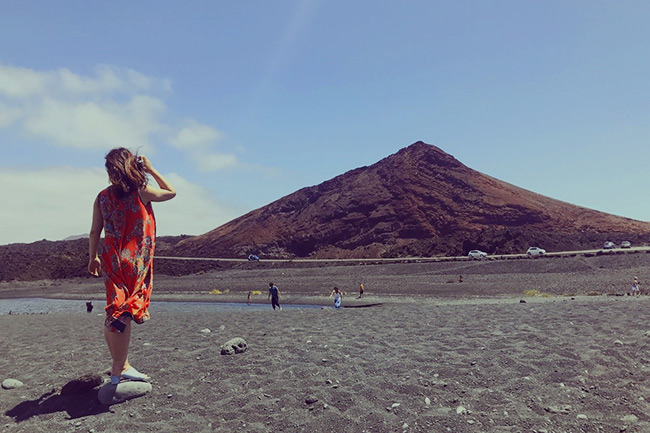
Sea, rock, volcanoes, houses and plants, every element is clearly defined. Blue, black, red, white and green are the colours that summarise the bizarre yet breath-taking natural scenes.
In the end, I did not have the chance to really visit the national park of Timanfaya, la Cueva de los Verdes and other tourist spots because we happened to run into the one and only strike in Lanzarote history. So lucky! Everything was closed.
Instead, I drove past the vast volcanic areas and convinced myself that the outside was as good as the inside. There is such beauty in Lanzarote that even if you miss the chance to visiting its very insides, the landscape that absorbs you is enough to take your breath away.
Planning to visit Lanzarote? Here are some tips:
- Rent a car: Definitely, do it! Rent a car to get around Lanzarote. CICAR is the local company, and charges around 80€ for 5 days if booked in advance. In our case, we booked last minute and got a car at 100 euros for 3 days.
- Food: I personally recommend the town of El Golfo, where you can try several kinds of fish and shells. We had an awesome experience at Restaurante Marejada. You have to try a parrillada de marisco (seafood barbecue), calamares (squid) and black rice paella. The black paella was accompanied by orange, adding a light touch of freshness to the dish. The staff is wonderful and work with the sweetest smiles.
